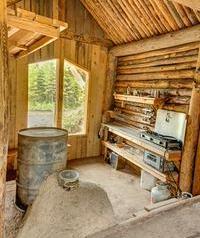Hello everyone,
I am wanting to design and build a place to dry wood that I am cutting at my place. Most of it is pine, but I think the theory is the same - I need a dry ventilated area. I can look into the shipping container idea on this other thread,
Drying Sawn Lumber permies dot com but I was picturing something somehow less expensive than 3-6k,
I am basically asking if people can weigh in with design suggestions?
I have for one option a set of garage door tracks
not very good stock photo of garage door tracks (doesn't show the legs well) and I thought perhaps to string them together with some 2x4 I have laying about, then put a billboard plastic on top of a corresponding size such as from this
random example of a used billboard plastic reseller
I would love to keep cost to like 200-300 and have it be a project that doesn't need to have a year of planning and thought and cost ton of money, where I can dry bamboo, a lot of small pines I am clearing and want to do some experimental log buildings with, and some large pines after it is sawn into dimensional lumber for a tiny house.
many thanks to anyone who can suggest some design ideas, they do NOT have to involve the materials I already have. I just haven't seen a plan for a place to dry lumber and I need to make one.
Cheers!







 something like this diameter. There will be a fair number of those but I may not be able to harvest them all at once anyway. I thought about stacking them in a check pattern so that they would dry faster.
something like this diameter. There will be a fair number of those but I may not be able to harvest them all at once anyway. I thought about stacking them in a check pattern so that they would dry faster.
